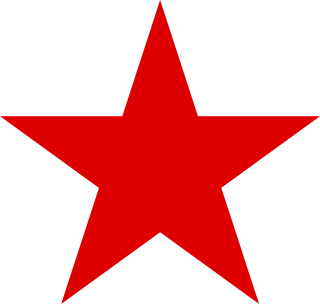
Engelbert Dollfuss was an Austrian Christian Social and Patriotic Front statesman. Having served as Minister for Forests and Agriculture, he ascended to Federal Chancellor in 1932 in the midst of a crisis for the conservative government. In early 1933, he shut down parliament, banned the Austrian Nazi party and assumed dictatorial powers. Suppressing the Socialist movement in February 1934, he cemented the rule of "Austrofascism" through the authoritarian First of May Constitution. Dollfuss was assassinated as part of a failed coup attempt by Nazi agents in 1934. His successor Kurt Schuschnigg maintained the regime until Adolf Hitler's annexation of Austria in 1938.

The Chancellor of Austria is the head of government of the Austrian Republic. The chancellor chairs and leads the government, which is composed of him, the vice-chancellor and the ministers. Together with the president, who is head of state, the government forms the country's executive leadership.

The politics of Austria take place in the framework of the federal parliamentary republic of Austria, with a President as head of state, and a Chancellor as the head of government. Governments, both local and federal, exercise executive power. Federal legislative power is vested both in the Federal Government and in the two chambers of Parliament; the National Council and the Federal Council. The Judiciary of Austria is independent of the executive and the legislature.

The Austrian People's Party is a Christian-democratic and conservative political party in Austria. A successor to the Christian Social Party of the late 19th and early 20th centuries, it was founded immediately following the reestablishment of the Republic of Austria in 1945 and since then has been one of the two largest Austrian political parties with the Social Democratic Party of Austria (SPÖ). In federal governance, the ÖVP has spent most of the postwar era in a grand coalition with the SPÖ. Most recently, it has been junior partner in a coalition government with the SPÖ since 2007. However, the ÖVP won the 2017 election, having the greatest number of seats and formed a coalition with the national-conservative Freedom Party of Austria (FPÖ). Its chairman Sebastian Kurz is the youngest Chancellor in Austrian history.

Julius Raab was a conservative Austrian politician, who served as Federal Chancellor of Austria from 1953 to 1961. Raab steered Allied-occupied Austria to independence, when he negotiated and signed the Austrian State Treaty in 1955. In internal politics Raab stood for a pragmatic "social partnership" and the "Grand coalition" of Austrian Conservatives and Social Democrats.

The President of Austria is the head of state of the Austrian Republic. Though theoretically entrusted with great power by the constitution, in practice the president is mainly a ceremonial and symbolic figurehead.

The Communist Party of Austria is a communist party in Austria. Established in 1918 as the Communist Party of German-Austria (KPDÖ), it is one of the world's oldest Communist parties. The KPÖ was banned between 1933 and 1945 under both the Austrofascist regime and the Nazi German control of Austria after the 1938 Anschluss. It played an important role in the Austrian resistance against the Nazis.

Leopold Figl was an Austrian politician of the Austrian People's Party and the first Federal Chancellor after World War II. He was also the youngest Federal Chancellor of Austria after the war.

Adolf Schärf (help·info) was an Austrian politician of the Socialist Party of Austria (SPÖ). He served as Vice-Chancellor from 1945 to 1957 and as President of Austria from 1957 until his death.
The Christian Social Party was a major conservative political party in the Cisleithanian crown lands of Austria-Hungary and in the First Republic of Austria, from 1891 to 1934. The party was also affiliated with Austrian nationalism that sought to keep Catholic Austria out of the state of Germany founded in 1871, that it viewed as Protestant Prussian-dominated, and identified Austrians on the basis of their predominantly Catholic religious identity as opposed to the predominantly Protestant religious identity of the Prussians. It is a predecessor of the contemporary Austrian People's Party.

Parliamentary elections were held in Austria on 10 May 1959. Although the Social Democratic Party received the most votes, the Austrian People's Party retained a bare one-seat plurality. The Communist Party of Austria lost its remaining three seats and has not returned to the National Council since. Voter turnout was 94.2%. The grand coalition that had governed the country since 1945 remained in office, with People's Party leader Julius Raab as Chancellor and Socialist leader Bruno Pittermann as Vice-Chancellor.

The elections to the Austrian National Council of 1949 were the second nationwide elections in Austria after World War II. About 500,000 registered Nazis, who were not allowed to vote in 1945, regained their voting rights. A newly created party, the Electoral Party of Independents (WdU) specifically targeted this group of voters and immediately won a large share of votes. The Austrian People's Party remained strongest party, although losing their absolute majority of seats. Leopold Figl stayed as Chancellor, leading a coalition with the Socialist Party of Austria as junior partner.

The elections to the Austrian National Council held on 25 November 1945 were the first after World War II. The elections were held according to the Austrian election law of 1929, with all citizens at least 21 years old eligible to vote, however former Nazis were banned from voting, official sources putting their numbers at around 200,000.

The 2006 general election for the National Council in Austria was held on 1 October 2006.

The Government of Austria is the executive cabinet of the Republic of Austria. It is composed of the Chancellor, who is head of government, the Vice-Chancellor, and the ministers.

Werner Faymann is a former Austrian politician who was Chancellor of Austria and chairman of the Social Democratic Party of Austria (SPÖ) from 2008 to 2016. On 9 May 2016, Faymann resigned from both positions amid widening criticism within his party.

Johann Koplenig was an Austrian politician. He was the chairman of the Communist Party of Austria (KPÖ) from 1945 until 1965, and Honorary Chairman of the party from 1965 until his death. In 1945, Koplenig was Vice-Chancellor of Austria in Karl Renner's provisional government.


















